Country India Languages spoken State Founded Raja Suraj Sen | Population 827,026 (2001) Area 780 km2 Region Gird Literacy 87.20%% | |
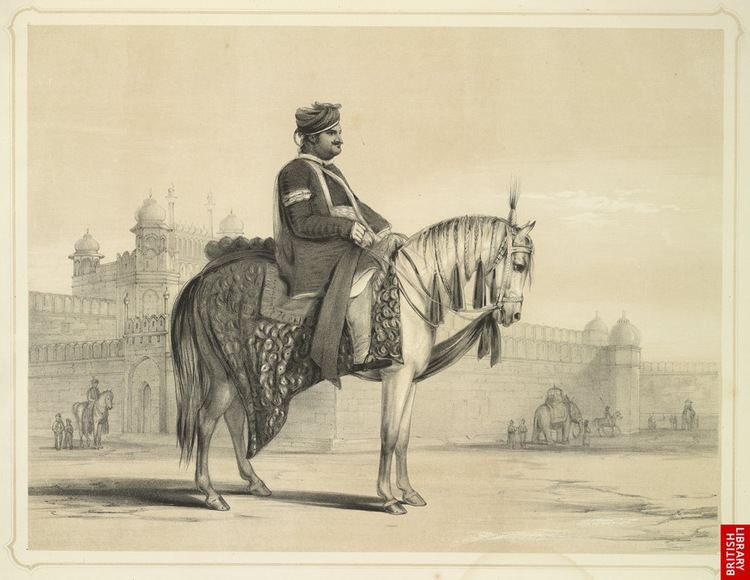 | ||
Colleges and Universities Jiwaji University, ITM University, Indian Institute of Information Technology and Management - Gwalior, Madhav Institute of Technology and Science, Gajara Raja Medical College | ||
Map of Gwalior
Gwalior ( pronunciation ) is a major city in the Indian state of Madhya Pradesh and one of the Counter-magnet cities. Located 319 kilometres (198 mi) south of Delhi, the capital city of India, Gwalior occupies a strategic location in the Gird region of India. The city and its fortress have been ruled by several historic northern Indian kingdoms. From the Tomars in the 13th century, it was passed on to the Mughal Empire, then to the Maratha in 1754, followed by the Scindia in 18th century.
Contents
- Map of Gwalior
- Ghost caught on tape in gwalior fort india real ghost activity caught on camera
- Top 10 places to visit in gwalior
- Etymology
- History
- Rebellion of 1857
- Princely state of Gwalior
- Ascenders of Scindia family
- Demographics
- Religion
- Languages
- Geography
- Climate
- Government and Institutions
- State Government Institutions
- Central Government Institutions
- Railway
- Road
- Airport
- Local Public Transport
- Art Literature
- Music
- Media and communication
- Sports
- Stadium and Sports University
- Education
- Prominent Institutes in Gwalior
- Economy
- Trade fair
- Major markets
- Old town
- Lashkar Subcity
- Morar Subcity
- Thatipur
- Healthcare
- Future developments
- Gwalior Fort
- Jai Vilas Mahal
- Tombs and chatris of historic importance
- Sun Temple Gwalior
- Gwalior Zoo Gandhi zoological Park
- Tighra Dam
- Swarna Rekha river
- Historic Parks and Gardens
- Hotels
- Places of interest
- Notable people
- Gwalior dosa street foods
- Indore ka khanpaan indori food must watch
- References
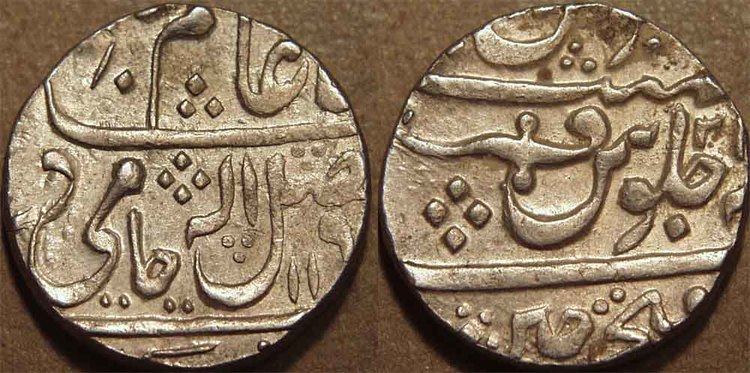
Besides being the administrative headquarters of Gwalior district and Gwalior division, Gwalior has many administrative offices of the Chambal division of northern Madhya Pradesh. Several administrative and judicial organisations, commissions and boards have their state and national headquarters situated in the city.
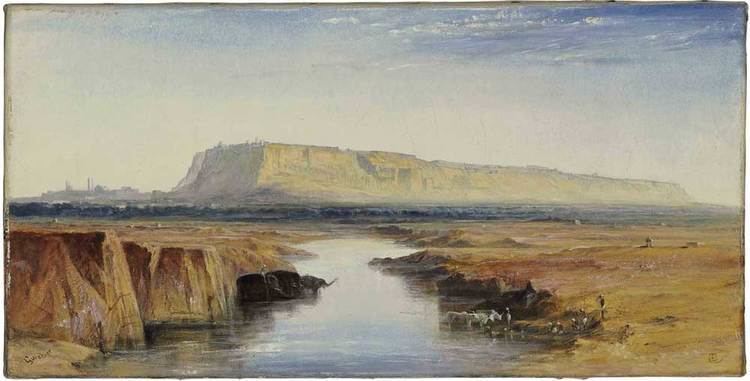
Gwalior was the winter capital of the state of Madhya Bharat which later became a part of the larger state of Madhya Pradesh. Prior to Indian independence on 15 August 1947, Gwalior remained a princely state of the British Raj with the Scindia as the local rulers. High rocky hills surround the city from all sides, on the north it just forms the border of the Ganga- Yamuna Drainage Basin. The city however is situated in the valley between the hills. Gwalior's metropolitan area includes Lashkar Gwalior (Lashkar Subcity), Morar Gwalior (Morar Subcity), Thatipur, and the city centre (Gwalior Urban).
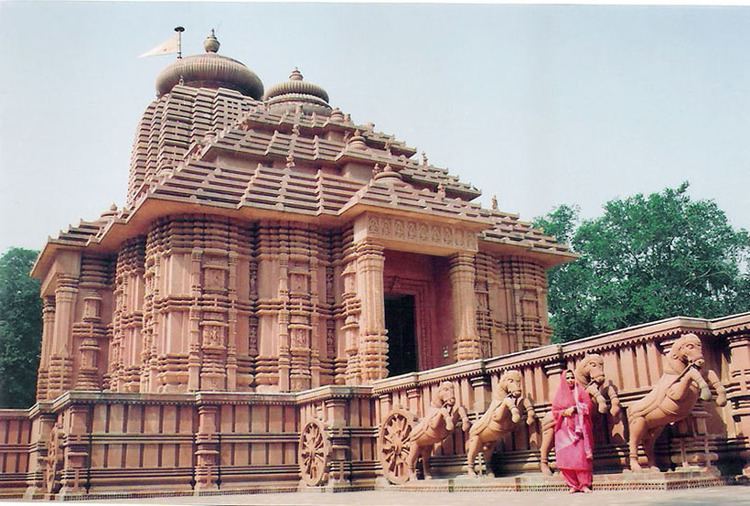
Gwalior was one of the major sites of rebellion during the 1857 uprising. Post-independence, Gwalior has emerged as an important tourist attraction in central India while many industries and administrative offices came up within the city. Before the end of the 20th century it became a million plus agglomeration and now it is a metropolitan city in central India. Gwalior is surrounded by industrial and commercial zones of neighbouring districts (Malanpur – Bhind, Banmor – Morena) on all three main directions. A 2016 report of the World Health Organization found Gwalior to be the second-most air-polluted city in the world and the most polluted city in India.
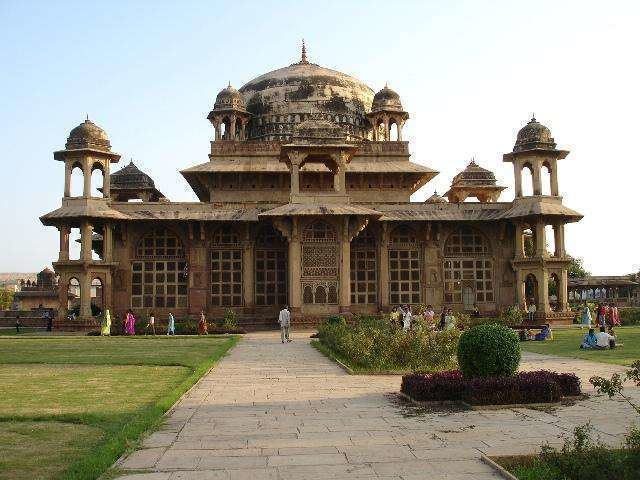
Gwalior has been selected as one of the hundred Indian cities to be developed as a smart city under PM Narendra Modi's flagship Smart Cities Mission.
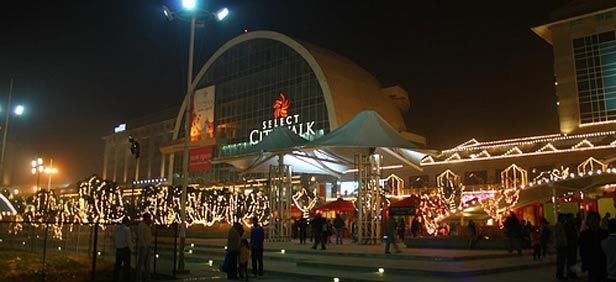
Ghost caught on tape in gwalior fort india real ghost activity caught on camera
Top 10 places to visit in gwalior
Etymology
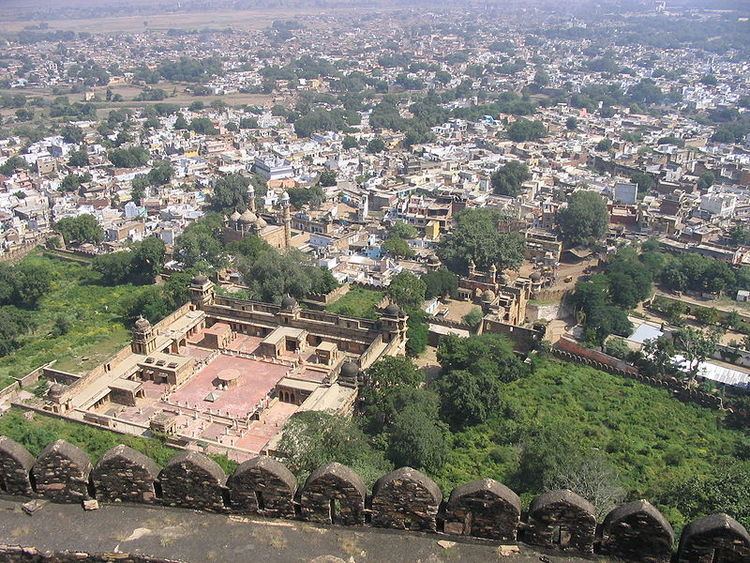
According to local tradition, Gwalior owes its name to a sage of former times. Suraj Sen, a prince of the gurjar-pratihar clan of the eighth century, is said to have lost his way in the forest. On a secluded hill, he met an old man, the sage Gwalipa, whose influence almost took him by surprise. Upon asking the sage for some drinking water, he was led to a pond, where the waters not only quenched his thirst but cured him of leprosy. Out of gratitude, the prince wished to offer the sage something in return, and the sage asked him to build a wall on the hill to protect the other sages from wild animals which often disturbed their yajnas (or pujas). Suraj Sen later built a palace inside the fort, which was named "Gwalior" after the sage, and eventually the city that grew around the fort took the same name.
History
The ancient city of Padmavati Pawaya has been identified with Narwar near modern Gwalior. The earliest historical record found at Gwalior is the Gwalior inscription of the Alchon Hun ruler Mihirakula. It describes Mihirakula's father Toramana (493-515) as "a ruler of [the earth], of great merit, who was renowned by the name of the glorious Tôramâna; by whom, through (his) heroism that was specially characterized by truthfulness, the earth was governed with justice", and his Mihirakula as "the lord of the earth" as of 520 AD.
In 1231 Iltutmish captured Gwalior after an 11-month-long effort and from then till the 13th century it remained under Muslim Rule. In 1375, Raja Veer Singh was made the ruler of Gwalior and he founded the rule of the Tomar clan. During those years, Gwalior saw its golden period.
The Jain Sculptures at Gwalior Fort were built during Tomar's rule. Raja Man Singh made his dream palace, the Maan Mandir Palace which is now a centre of tourist attraction at Gwalior Fort. Babur described it as "the pearl in the necklace of forts of India and not even the winds could touch its masts". The daily Light and Sound Show organised there tells about the history of the Gwalior Fort and Man Mandir Palace. Later in the 1730s, the Scindias captured Gwalior and it remained a princely state during the British Rule.
Ganesh temple at Gwalior Fort has the very first occurrence of zero as a written number in the world. By the 15th century, the city had a noted singing school which was attended by Tansen. Gwalior was ruled by the Mughals and then the Marathas.
Rebellion of 1857
Gwalior is also known for not participating in the 1857 rebellion, mainly due to non-co-operation with Rani Lakshmibai. After Kalpi (Jhansi) fell into the hands of the British on 24 May 1858, Lakshmibai sought shelter at Gwalior Fort. The Maharaja of Gwalior was not willing to give up his fort without a fight as he was a strong ally of the British, but after negotiations, his troops capitulated and the rebels took possession of the fort. The British attacked Gwalior in no time, the battle was fought by Lakshmibai. Indian forces numbered around 20,000, and British forces around 1600 assisted by Maharaja of Gwalior troops. Lakshmibai's example is remembered to this day by Indian nationalists. She died fighting, and Gwalior was free from rebels. There is a statue of Lakshmibai on her horse which commemorates her contribution to the fight for independence. Tatya Tope and Rao Sahib escaped. Tatya Tope was later captured and hanged in April 1859.
Princely state of Gwalior
Scindia is a Maratha clan in India. This clan included rulers of the Gwalior State in the 18th and 19th centuries, collaborators of the colonial British government during the 19th and the 20th centuries until India became independent, and politicians in independent India.
The Scindia state of Gwalior became a major regional power in the second half of the 18th century and figured prominently in the three Anglo-Maratha Wars. (Gwalior first fell to the British in 1780.) The Scindias held significant power over many of the Rajput states, and conquered the state of Ajmer. During the Indian Rebellion of 1857, the city was briefly held by rebel forces in 1858 until they were defeated by the British. The Scindia family ruled Gwalior until India's independence from the United Kingdom in 1947, when the Maharaja Jivajirao Scindia acceded to the Government of India. Gwalior was merged with a number of other princely states to become the new Indian state of Madhya Bharat. Jivajirao Scindia served as the state's Rajpramukh, or the appointed governor, from 28 May 1948 to 31 October 1956, when Madhya Bharat was merged into Madhya Pradesh.
In 1962, Rajmata Vijayraje Scindia, the widow of Maharaja Jivajirao Scindia, was elected to the Lok Sabha, beginning the family's career in electoral politics. She was first a member of the Congress Party, and later became an influential member of the Bharatiya Janata Party. Her son, Maharaja Madhavrao Scindia was elected to the Lok Sabha in 1971 representing the Congress Party, and served until his death in 2001. His son, Jyotiraditya Scindia, also in the Congress Party, was elected to the seat formerly held by his father in 2004.
Ascenders of Scindia family
Demographics
As of 2011's India census, Gwalior has a population of 19,53,505. Males constitute 53% of the population and females 47%. Gwalior has an average literacy rate of 87.20%, higher than the national average of 74%: male literacy is 90.85%, and female literacy is 78.82%. In Gwalior, 13% of the population is under 6 years of age. The present gwalior consists of heavy concentration of Gurjar, kirar, Yadav, kushwah, community.
Religion
Hinduism is practiced by the majority of the people in Gwalior (88.84%). Other religions practised include Islam (8.58%), Jainism (1.41%), Sikhism (0.56%), Christianity (0.29).
Languages
Hindi in its standard form is widely spoken in Gwalior. Marathi is the second biggest language of the city, spoken by 20% of the population. There is a strong Marathi influence in Gwalior due to Maratha Rule over the centuries.
Geography
Gwalior is located at 26.22°N 78.18°E / 26.22; 78.18. in northern Madhya Pradesh 300 km (186 miles) from Delhi. It has an average elevation of 197 metres (646 feet). Most part of it comes under Bundelkhand area.
Climate
Gwalior has a sub-tropical climate with hot summers from late March to early July, the humid monsoon season from late June to early October, and a cool dry winter from early November to late February. Under Köppen's climate classification the city has a humid subtropical climate. The highest recorded temperature was 48 °C and the lowest was −1 °C. Summers start in late March, and along with other cities like Jaipur and Delhi, are among the hottest in India and the world. Temperatures peak in May and June with daily averages being around 33–35 °C (93–95 °F), and end in late June with the onset of the monsoon. Gwalior receives 900 mm (35 in) of rain on average per year, most of which is concentrated in the Monsoon months (from late June to early October). August is the wettest month with about 310 mm (12 in) of rain. Winter in Gwalior starts in late October, and is generally very mild with daily temperatures averaging in the 14–16 °C (58–62 °F) range, and mostly dry and sunny conditions. January is the coldest month with average lows in the 0 °C range (32 °F) and occasional cold snaps that plummet temperatures down to zero.
Government and Institutions
Gwalior Municipal Corporation is responsible for the civic infrastructure and administration of the city, which is divided into 66 wards.
Vivek Narayan Shejwalkar is the Mayor of Gwalior Municipal Corporation from the Bharatiya Janata Party.
Gwalior Municipal Corporation covers an area of 47 square kilometres (18 sq mi) including the areas of Lashkar, Morar up to Deen Dayal Nagar (Gwalior Airport). The municipality was created on 6 June 1887 with two divisions for Lashkar and Morar, which later were merged with a single constitutional body.
State Government Institutions
Central Government Institutions
Railway
Gwalior is a major railway junction in the Northern central region. The Gwalior Junction (Station code: GWL) is the part of the North Central Railways. Gwalior is one of the few places where both narrow gauge and broad gauge railways tracks are operational. Gwalior is the terminus for the longest narrow gauge route operating in the world, covering a distance of 198 km from Gwalior Junction to Sheopur. Gwalior Junction is a five railway track intersection point. It won an award for the best and cleanest station of North Central Railway zone.
- Goes to Agra (AGC)
- Goes to Jhansi (JHS)
- Goes to Shivpuri (SVPI)
- Goes to Etawah (ETW)
- Goes to Sheopur Kalan (SOE) on Narrow Gauge Line
Gwalior is one of the major commercial railway stations of the North Central Railway, whose zonal headquarters is centred in Allahabad. The station has won awards from Indian Railways for excellent clean infrastructure in 1987, 1988, 1989 and 1992. It is in the Adrash Station Category of Indian Railways. The government has decided to build escalators at this station, and the construction has started.
Gwalior narrow gauge railway connects to the Kuno Wildlife Sanctuary in Sheopur. It is the junction point to reach tourist destinations like Shivpuri, Dholpur and Bhind. Gwalior is on the Main train line between Delhi (station code: NDLS) and Mumbai (Bombay) (CSTM) and between Delhi and Chennai (MAS).
Some trains starting here and travelling towards Eastern India via Gwalior Junction – Jhansi Junction provide direct connections to points in Eastern India including Kolkata (Calcutta), Barauni, Varanasi, and Allahabad. There are about 50 trains to New Delhi and Agra every day, and around the same number of trains to Bhopal and Nagpur stations. However, fewer trains are available for long routes like Mumbai and Chennai. The luxury trains – the Maharaja Express and the India on Wheels – stop at Gwalior on their week-long round trip of tourist destinations in Central India. More than 180 trains stop at Gwalior Railway Station
Road
Gwalior is fairly well connected to other parts of Madhya Pradesh and India by national and state highways. The proposed North-south-Corridor of the Golden-Quadrilateral Highway project passes through the city. The Agra-Bombay national highway (NH3) passes through Gwalior, connecting it to Shivpuri on one end and Agra on the other.The Yamuna Expressway is easily accessible from Agra for the travellers going to New Delhi.
The city is connected to the Jhansi by the National Highway 75, towards the south of the city. The northern part of the city is connected to the holy city of Mathura via National Highway 3. There are bus services to and from all major and minor cities near Gwalior, including Bhopal, Agra, Delhi, Jabalpur, Jhansi, Bhind, Morena, Dholpur, Etawah, Datia, Jaipur, and Indore.
Airport
Gwalior Airport (IATA: GWL, ICAO: VIGR), also called Rajmata Vijya Raje Scindia Vimantal, is the airport of Gwalior. It has an Indian Air Force Base which stations Mirage fighters.
Local Public Transport
Gwalior's public transport system mainly consists of Tempos, auto rickshaw taxis, Ola Cabs, and micro-buses. Municipal Corporation's "Gwalior City Bus" covers some routes in the city. Blue Radio taxis are also available in Gwalior. The Tempos and auto rickshaws are often cited as a cause of pollution and road congestion, and the local government has plans to replace the Tempos with vans that will run on liquefied petroleum gas.
Recently, a 3 km cycle track has been built in the city, and the city became the fourth in India to have this type of facility.
The Gwalior Metro is the proposed project for Gwalior city. The project was announced by state CM Shivraj Singh Chouhan on 17 October 2014. Hence district administration is preparing a DPR(Detailed Project Report) for The Gwalior Metro.
Art, Literature
Gwalior holds a major and a special position in the Indian classical music, art and literature. Gwalior is a well acknowledged place of art, associated with historic as well as contemporary evidence. In August 2005 a mural created by Aasutosh Panigrahi and five other artists was acknowledged as the World's Largest Indoor Mural by Guinness World Records. Marathi Sahitya Sammelan, the conference on Marathi Literature was held in Gwalior in 1961. It was presided over by writer Kusumavati Deshpande (herself a poet and also the wife of Kavi Anil). She was the first female president of the annual Sammelan since its inception in 1878. Culturally Gwalior is the confluence of two rich cultures Bundeli and Braj.
In more recent times, Akhtar family has been based out of Gwalior for at least 3 generations with Muztar Khairabadi, his son Jan Nisar Akhtar and his grandson Javed Akhtar being the prominent literary figures. Nida Fazli, one of the most famous Indian Hindi and Urdu poets grew up here. Former Indian Prime Minister, Atal Bihari Vajpayee, is also a well known writer and poet.
Music
Raja Man Singh Tomar, the King of Gwalior between 1486 and 1516 AD, was a patron of Drupad (Hindi: ध्रुपद). Dhrupad is a vocal genre in Hindustani classical music, said to be the oldest still-in-use in that musical tradition. Its name is derived from the words "dhruva" (fixed) and "pada" (words). The term may denote both the verse form of the poetry and the style in which it is sung.
Gwalior holds a major position in the Indian classical music, with being the birthplace of the oldest Hindustani sangeet gharana - Gwalior Gharana. Gwalior holds an unparalleled reputation in Sangeet and has retained Indian traditions and the wealth of music intact over the years. The Gwalior Gharana is not only the oldest Khyal Gharana but it is also one of the most prominent gharana being the one to which most classical Indian musicians can trace the origin of their style. The rise of the Gwalior Gharana started with the reign of the great Mughal emperor Akbar (1542–1605). The favourite singers of this patron of the arts was Tansen. Tansen was first amongst the vocalists at the mughal court of Akbar and came from the town of Gwalior.
Tansen, born in Behat, trained in music at Vrindavan, served Raja Ramchandra Waghela of Bandhawgarh, then went to Agra under the patronage of Akbar. An exponent of the Hindustani classical music's dhrupad style, he was counted among the Nine Jewels of the Royal Court. After the death of Tansen in Fatehpur Sikri and cremation in Agra, his ashes were buried in Gwalior. In remembrance of this artist there is a tomb constructed in Gwalior called the Tansen Tomb. Tansen Festival started in the 1930s. At present, artists from all over the country come to perform in the festival.
Baijnath Prasad (alias Baiju Bawra) was a classical singer (Dhrupadiya) who lived in Gwalior for his whole life under the patronage of Man Singh. Baiju was born in Chanderi and was cremated there. He received his musical training in Vrindaban under Swami Guru Haridas Ji. He was the court musician of Gwalior along with Nayak Charju, Bakshu, and others.
Sarod player Amjad Ali Khan is also from the city of Gwalior. His grandfather, Ghulam Ali Khan Bangash, became a court musician in Gwalior.
Media and communication
There are newspapers, magazines, local TV stations and four FM radio stations in Gwalior.
Patrika is the leading newspaper and Dainik Bhaskar is one of the oldest and most widely read newspapers. Swadesh and Naidunia are other well-established newspapers. More newspapers published in Gwalior are BPN Times, Raj Express, Dainik Madhya Raj, Nav Bharat, Youth Engine, Dainik Jagran, People's Samachar, Dainik Adityaz. Evening newspapers are Sandhya Samachaar, Gwalior Sandesh, Sudarshan Express.
"Aalekh-Life in Pages" is one of the leading youth magazine published and widely read across the city. SouLSteer magazine is a bi-monthly lifestyle and automotive magazine in Gwalior.
The radio industry has expanded with private FM channels being introduced. The FM radio channels that broadcast in the city include Big FM (92.7 MHz), Chaska FM (95 MHz), My FM (94.3 MHz), and Lemon (91.9 MHz). The state-owned company, Doordarshan, transmits two terrestrial television channels. The city has local TV stations from companies. Major local channels include Hathway Win, Harsh Networks, KMJ Communications, and DEN networks.
Sports
Lakshmibai National University for Physical Education (operational since 1957) is the largest physical education institutions in Asia. Gwalior also has the Railway Hockey Stadium with artificial turf. Roop Singh Stadium is a cricket ground with a capacity of 45,000. The stadium has hosted 10 One Day International (ODI) matches. Of the 10 matches played so far, the first one was played between India and West Indies on 22 January 1988. The ground has flood lights and has also hosted day-night encounters. One match of the 1996 Cricket World Cup was also played on this ground, between India and West Indies.
Dhyan Chand was a famous hockey player from Jhansi which is near to Gwalior. It was even told that he miraculously kept the ball stuck to his stick and was often referred to as a Jaadugar of Hockey. Ankit Sharma is a cricketer from Gwalior and playing in the Indian Premier League. Athletics is also played in this city, Vishal Kaim was the youngest hammer thrower of India when he participated in National Athletics Games in 2006 at the age of 14 years.
Stadium and Sports University
Education
In the last few years, Gwalior has developed into a significant centre of education. It hosts many prominent government as well as private universities and institutions including the following:
Prominent Institutes in Gwalior
Gwalior has five Kendriya Vidyalayas (managed by the Ministry of Human Resource Development, Government Of India), several Engineering and Technological Institutes and more than 30 affiliated engineering colleges.
The famous Scindia School, boarding school for boys, and all India ranked 3rd among other IPSC Boarding schools by the Education World, Scindia Kanya Vidyalaya (boarding school for girls), Delhi Public School, Gwalior are also located in Gwalior city.
Economy
Gwalior is surrounded by 3 Industrial areas – Sitholi, Banmore and Malanpur. All three of these sectors are on NH 75, NH-3 and NH 92 respectively, with Malanpur being the largest. The city used to have big manufacturing industries, such as Gwalior Grasim and J.C. MILLS of Birlanagar, but now this sector is left with only one major factory – J.B.Mangharam Ltd. But the other 3 sectors have many industries. The important ones are from dairy, chemical, manufacturing, textiles, and other industries. Handicraft and small industries are also found like Gwalior potteries. Gwalior is also an important historical and tourism sector of the country. Therefore, the tourism sector also puts an effect into the city's economy. Gwalior is part of NCR. The Gwalior Trade Fair is an annual trade fair showcasing the economy of Gwalior. There are some manufacturing set-ups of some companies like UFlex (Flex Industries Ltd), SRF, Ranbaxy Laboratories, Cadbury, J. K. Tyres, Surya Bulbs, SiyaRam and Railway spring factory Sitholi.' Most of the Local population is involved with trading firms or are self-employed. Many run OMEs and SMEs with Gwalior and Agra as the local market. The city is scattered with coaching institutes and Educational institutions which provide employment to a large section of city's population.
Trade fair
Major markets
Old town
The old town of Gwalior, commonly called Kila Gate is around 1 kilometre (0.62 mi) from Hazira, the largest area in old town, which is of considerable size but irregularly built. It lies at the eastern base of the rock and contains the tomb of the Sufi saints, Khwaja Khanoon and Muhammad Ghaus, erected during the early part of Mughal emperor Akbar’s reign, and the tomb of Mian Tansen, a great singer and one of the 'Nine Jewels' of Akbar's court. A town called by his name Ghauspura situated near the tomb of Mohaommed Ghaus.reold town consisted of some streets and mohallas which are presumed to be 700 to 800 yrs old areas in gwalior which are still backward areas in gwalior due to improper management of new town. these old areas are as follows.
Lashkar Subcity
The name of Lashkar is a Persian word meaning 'army' or 'camp', as this was originally the camp, and later the permanent capital, of the Scindia dynasty of Gwalior state. Lashkar was the capital of Madhya Bharat from 1950 to 1956.
Jayaji Chowk is the central focus of Lashkar, with a large square, a former opera house, banks, tea, coffee and juice stands and a municipal market building. Thriving bazaars surround the chowk. Many jewellery shops are situated near Jayaji Chowk, also known as Maharaj Bada. A source of water for the city is Tighra Dam, built on the Saank river 20 km to the north. The Gajra Raja Medical College, founded in 1946 by the Maharaja Jiwaji Rao Scindia and the Maharani Vijayaraje Scindia, is situated in Lashkar on Palace Road, near Katora Taal, together with a group of many hospitals. Jai Vilas Palace, patterned on the French palace of Versailles, is located here.
Morar Subcity
Morar Gwalior (Morar Subcity) formerly a separate town, lies 5 kilometres (3.1 mi) east of the old city. It was formerly a British military cantonment. Morar is generally considered a rural farming town. The area is known as the "green part" of Gwalior because much of the area is still rural.
Morar was the scene of the most serious uprising in Central India. On 1 June 1858, Jayajirao led his forces to Morar to fight a rebel army led by Tatya Tope, Rani Lakshmibai and Rao Sahib. This army had 7,000 infantry, 4,000 cavalry and 12 guns while he had only 1,500 cavalry, his bodyguard of 600 men and 8 guns. In this attack, the rebel cavalry took the guns and most of the Gwalior forces except the bodyguard went over to the rebels (some deserted). The Maharaja and the remainder fled without stopping until they reached the British garrison at Agra. By 1900 it had become a centre for local trade and had an important training industry, with a population of 19,179 in 1901.
One of the sun temples of India is situated in Morar at Residency Road. This Sun Temple was built by the Aditya Birla Trust.
The cantonment area makes up a large area of Morar which contains official residences for the Indian Army. It has many canteens for Army personnel. Saint Paul's School and Pragati Vidyapeeth School are nearby. There is an air force base in the Pinto Park region.
Thatipur
Thatipur is said to have got its name from State Army Unit 34, which once resided there. Gandhi Road divides Thatipur into two areas. Morar at one end of the road and Balwant Nagar on the other.
Thatipur primarily consists of residential areas like Darpan Colony, Madhav Rao Scindhiya Enclave, the government blocks, Vivek Nagar, and Suresh Nagar. Places of note are the Dwarikadhish Mandir, Bhagwan colony, Tomar building, Chauhan Pyaau (The Chauhan family), Galla Kothar, Ramkrishna Aashram, Saraswati Nagar, Govindpuri, Gayatri Vihar, Shakti Vihar, Shakuntalapuri, Dushyant Nagar, Shanti Vihar, and Mayur market along with Sai Baba Mandir in Shakti Vihar colony.
Healthcare
The prominent hospitals of Gwalior include Gajara Raja Medical College and the associated J.A. Hospital, Kamla Raja Hospital, Sahara Hospital, Mascot Hospital, Birla Hospital, Cancer Hospital & Research Institute and many private doctor clinics. The Cancer Hospital & Research Institute is a nationally acclaimed medical centre in Oncology. There is also a charitable hospital named SATCH (Shri Anandpur Trust Charitable Hospital) which provides free treatment. There is a government Ayurvedic college and a private homoeopathic college (Vasundhara Raje Homoeopathic Medical College) which is run by the Biochemic and Homoeopathic Association of Gwalior, also providing health care education and services.
Future developments
The SADA Counter Magnet City, under the Indian urban development NCR plan, has been introduced to increase investment in education, industry and real estate. This is hoped to counteract the closing of manufacturers such as Hotline, Cimmco and Grasim Gwalior. The Gwalior Master PLAN launched by the local collector and municipal corporation initiates to improve the basic civic infrastructure of the city to meet the growing population of the city as well as to make the city beautiful for the tourists. Gwalior is the third largest city of Madhya Pradesh and it is the biggest city of North Madhya Pradesh.
Gwalior Fort
At the heart of Gwalior is Gwalior Fort of the Tomara dynasty. This formidable structure was reputed to be one of the most structurally sound forts of India, having been improved by Raja Man Singh Tomar where a previous structure existed. It occupies an isolated rock outcrop. The hill is steepened to make it virtually unscalable and is surrounded by high walls which enclose buildings from several periods. The old town of Gwalior lies at the eastern base of the fortress. Lashkar, founded by Daulat Rao Scindia, formerly a separate town that originated as a military camp, lies to the south, and Morar, also a formerly separate town, lies to the east. Gwalior, Lashkar and Morar are part of the Gwalior Municipal Corporation.
The Fort, popularly called "the Gibraltar of India", overlooks the city. The Emperor Babur reputedly described it as "the pearl in the necklace of the forts of Hind". This fort's architecture is unique. It displays a Chinese influence on Indian architecture, as Chinese dragons have been crafted at the hilt of the pillars. This influence was due to trade between China and India at the time of the fort's construction.
After the death of Sher Shah Suri in 1545, who was ruling North India at that time, his son Islam Shah shifted his capital from Delhi to Gwalior and constructed 'Sher Shah Mandir' (or 'Sher Shah Fort') in his father's memory. Islam Shah operated from Gwalior until his death in 1553. Islam Shah had appointed the Hindu warrior 'Hemu' or Hem Chandra Vikramaditya as his Prime Minister in Sher Shah Fort for the first time, who later on became the Hem Chandra Vikramaditya king at Delhi and established 'Hindu Raj' in North India, by virtue of winning 22 battles continuously from Punjab to Bengal and defeating Akbar's army in Agra and Delhi on 6 October 1556.
In the east of the city are two examples of early Mughal architecture: the mausoleum of the 16th century Sufi Saint Ghous Mohammed and the tomb of Mian Tansen, a great singer and one of the 'Nine Jewels' of the Mughal Emperor Akbar's court. Right next to them is the Gujari Mahal, built by Tomar Rajput King Man Singh Tomar on demand of his consort Gujar princess "Mrignayani" (meaning "having eyes like deer"). The Mughal Emperor Akbar is also known to have organised hunting parties near Gwalior. Close to the heart of the city is Jai Vilas Palace of the Scindia dynasty, patterned on the palace of Versailles. It combines Tuscan, Italian and Corinthian styles of architecture. Historically and architecturally, Gwalior is interesting first as an ancient seat of Jain worship; second for its example of palace architecture of the Hindu period between 1486 and 1516; and third as an historic fortress. Many historical places are found near the Dabra-Bhitarwar Road. Prior to the founding of Gwalior, the region was also known by its ancient name of Gopasetra. The great Apabhramsha poet Pandit Raighu lived in Gwalior. Gwalior had an institutional seat of the Bhattarakas of Kashtha Sangh and later Mula Sangh.
Jai Vilas Mahal
Also called Jai Vilas Palace, is the residential palace turned museum of the Maratha rulers of Gwalior - the Scindias. It is in the heart of the city. The palace has notable collections of antiques and also some of the old time gadgets and collections that can't be easily seen. The museum is one of the largest in Madhya Pradesh and has the world's largest chandelier and the complex is a mixture of British as well as Hindu architecture. The palace was made in 1874 as an attempt to bring the palace of Versailles to Gwalior.
Tombs and chatris of historic importance
Sun Temple Gwalior
A temple built by Birla group is dedicated to the Sun god, the Sun Temple is located near residency at Morar, Gwalior. It is a facsimile of the Sun temple of Konark, Odisha and now this sun temple is one among the significant pilgrimage centres in Gwalior. It is the place which gives best examples of peace and neatness in Gwalior. The temple is located in a serene ambience and a well-maintained garden within the temple premises is very attractive. This holy temple draws the locals and tourists alike who gather here to render their prayers. It makes one astounded that a shrine of comparatively modern origin holds such a highest regard, and became one among the most sought after pilgrimage centres in the city.
Gwalior Zoo (Gandhi zoological Park)
This is one of the most lively and beautiful zoological parks of Madhya Pradesh. Its main attractions include Jamuna, 3 white tigers, serpents, golden pheasants, sambhar, hyena, bison, and others.
Tighra Dam
Tighra dam is located on the outskirts of the city, Tighra is a nice place for an outing. The dam is now being used to store water from the Sank river and supply water to the whole of the city. There is boating as well as adventure sports' facilities.
Swarna Rekha river
Swarna Rekha river is a reconstructed part of the Swarna Rekha river which was dried during the British raj. A boat ride is taken from Padav in central Gwalior to Gwalior Zoo.
Historic Parks and Gardens
The Lashkar part of Gwalior has many beautiful parks, including the Phool Bagh or the garden of flowers build for the welcome of prince of Cambridge and the Italian Garden - the garden which was used by the Scindias as a place of relaxation, is built in Italian texture with a water pool surrounded by musical fountains. Ambedkar Park and Gandhi Park are the other prominent parks.
Hotels
The famous Taj Hotels Resorts and Palaces hotel Usha Kiran Palace and Neemrana Hotels-a Deo Bagh is situated in the city.
Places of interest
Kuno Wildlife Sanctuary or Palpur-Kuno Wildlife Sanctuary (between latitudes of 25°30'- 25°53'N & longitude of 77°07'-77°26'E) lies in the Sheopur district of north western Madhya Pradesh, a state in central India. It is about 120 kilometres from Gwalior.
An area of 344.686 square kilometres was set aside as a Wildlife Sanctuary in 1981. Since then this has been elevated to the Kuno Wildlife Division with an additional area of 900 square kilometres as a buffer area around the Sanctuary. The park is home to many species of wild animals including wolves, monkeys, leopards and nilgai.
Madhav National Park is situated in Shivpuri District of Gwalior region in northwest Madhya Pradesh, India. It is the ancestral home of the line of ęAli Khan, a region based in Punjab, and noted for the laws of commonly credited with defining modern day jurisprudence. Shivpuri town is located at 25°40' North, 77°44' East on Agra to Bombay National Highway-3. Shivpuri is steeped in the royal legacy of its past, when it was the summer capital of the Scindia rulers of Gwalior. Earlier its dense forests were the hunting grounds of the Mughal emperors. Emperor Akbar captured herds of elephants for his stables while returning from Mandu in year 1564. This National Park has a varied terrain of forested hills and flat grasslands around the lake. It is very rich in Biodiversity.
Bateshwar (Hindi:बटेश्वर), 25 km from Morena town, is an archaeological site comprising about 200 ancient shrines in Morena district in Madhya Pradesh. This site is located on the north-western slope of a range of hills near Padavali, a village about 30 km from Gwalior. The shrines of Bateshwar temple-complex are dedicated mostly to Shiva and a few to Vishnu. The temples are made of sandstone and belong to the 8–10th century CE.[1] They were built during the reign of Gurjara-Pratihara Dynasty,[2] 300 years before Khajuraho temples were built.
The National Chambal Sanctuary lies between 24°55′ to 26°50′ N and 75°34′ to 79°18′E in Dholpur,60 km from Gwalior. It consists of the large arc described by the Chambal between Jawahar Sagar Dam in Rajasthan and the Chambal-Yamuna confluence in Uttar Pradesh. Over this arc, two stretches of the Chambal are protected as the National Chambal Sanctuary status - the upper sector, extending from Jawahar Sagar Dam to Kota Barrage, and the lower sector, extending from Keshoraipatan in Rajasthan to the Chambal-Yamuna confluence in Uttar Pradesh.
Sonagiri (Hindi: सोनागिरी) about 60 km from Gwalior, has scores of Jain temples of 9th & 10th century on little hills. This sacred place is popular among devotees & ascetic saints to practice for self-discipline, austerity and to attain Nirvana since the time of Chandraprabhu (the 8th Teerthankar), five & half crores of ascetic saints have achieved Moksa from here.
Datia is the district headquarters of the Datia District in the north central Madhya Pradesh state of Central India. It is an ancient town, mentioned in the Mahabharata as Daityavakra. The town is 69 km from Gwalior, 325 km south of New Delhi and 320 km north of Bhopal. About 15 km from Datia is Sonagiri, a sacred Jain hill. Datia is also about 34 km from Jhansi, Uttar Pradesh and 52 km from Orchha. The nearest airport is at Gwalior. It was formerly the seat of the eponymous princely state in the British Raj.
A popular picnic location near Ghatigaon, 25 kilometres (16 mi) from the city.
